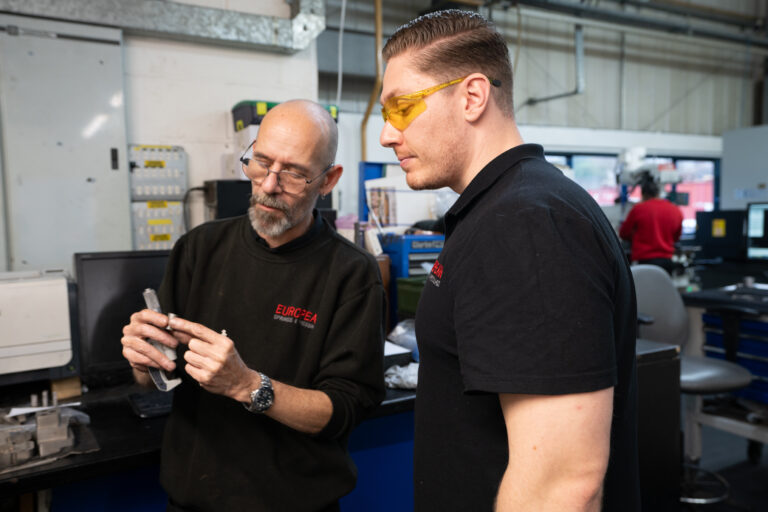Home › Manufacturing Capabilities › Spring Durability
Spring durability refers to the ability of springs to maintain their force and prevent permanent shortening when subjected to travel under load. For a spring to remain durable, the stresses within the material must stay within the limits of the material’s strength.
When metal is subjected to a load, it first bends elastically and, under heavier loads, plastically. Elastic deflection allows the material to return to its original form once the load is removed. Plastic deflection, however, causes permanent change, preventing the metal from regaining its previous shape. For this reason, only the elastic range of deflection is utilised in creating reliable springs.
The relationship between stress and deflection is defined by Hooke’s Law, where the elastic modulus E (for normal) and G (for shear) describe a material’s elastic behaviour. A lower figure means greater deflection under the same stress, whereas a higher figure allows higher stress before plastic deformation begins, providing more elastic deflection. The point where plastic deformation starts is the yield strength, and the ultimate tensile strength defines the breaking point.
Two additional material behaviours important to spring performance are creep and relaxation, as well as fatigue. Certain metals can exhibit very slow plastic deformation, even at stress levels below their yield strength. In spring engineering, this is referred to as creep.
The extent of creep or relaxation depends on a variety of factors, including temperature, applied stress, material yield strength, and time. For example, higher stress, heat, or duration increases creep. Both stress and temperature play a major role in a spring’s long-term durability. At European Springs & Pressings Ireland, we conduct regular creep and relaxation testing across various materials and spring designs, ensuring we gather detailed insights into these essential properties.
Springs can also fail under pulsating stresses that are below their yield strength due to fatigue. Fatigue starts with a microscopic crack that enlarges with repeated loading. Once the remaining material is stressed beyond its ultimate tensile strength, the spring eventually fractures.
Here at European Springs & Pressings Ireland, we place great importance on ongoing development and quality assurance, as part of this we regularly conduct fatigue testing on various spring types and materials.
This helps us to share valuable knowledge and data about the fatigue resistance of springs.
The likelihood of fatigue failure is not only influenced by the applied stress but also by factors such as the amplitude of the load cycles and the material’s tensile strength.
Even when two materials have the same chemical makeup and strength, their fatigue properties can differ due to variations in structural factors.
Environmental conditions can also impact fatigue resistant, such as temperature and corrosion. Due to the variability in fatigue strength, statistical methods are used during testing to help obtain reliable results. This approach enables us to assess risk levels and determine safety margins accurately.

And even if we don’t have exactly the tool we need, European Springs’ in house technology enables us rapidly to design and make complex tools, allowing us to offer more competitive prices.



© Copyright 2025 | European Springs
Designed, Promoted and Powered by SQ Digital